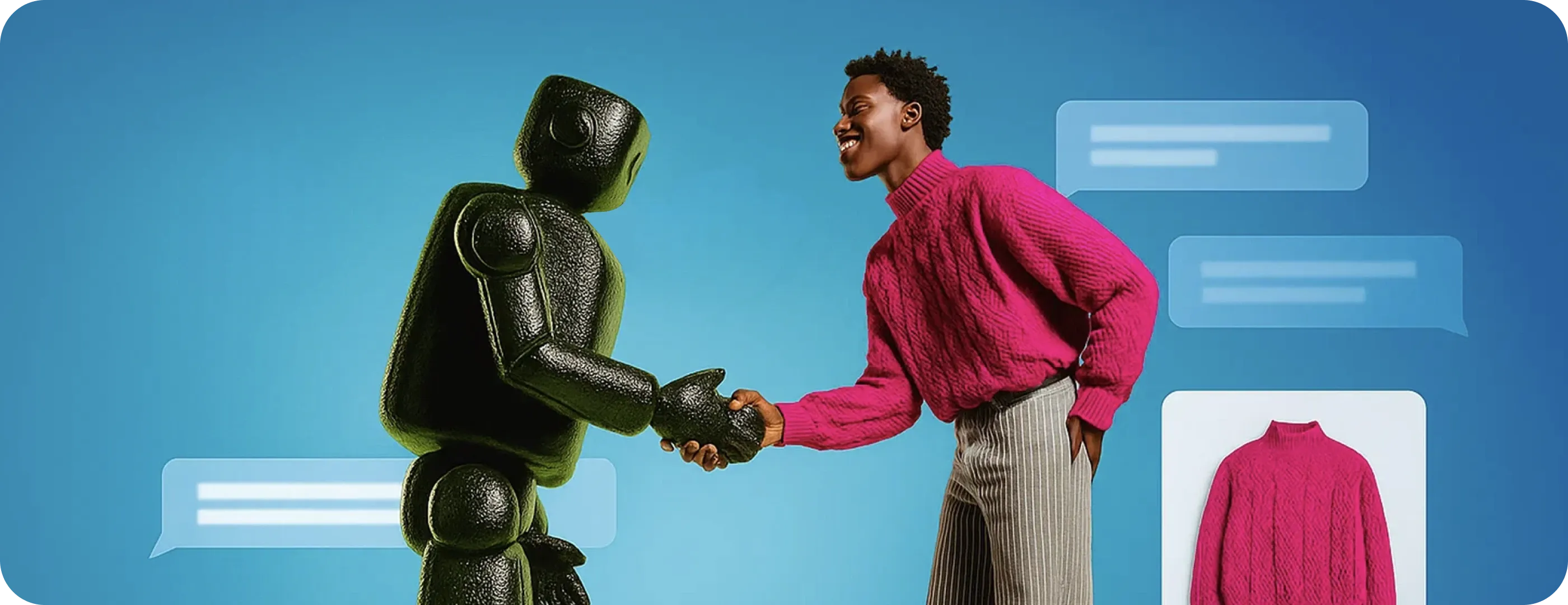
Your customers expect instant answers. They don’t want to wait for email responses or research queries on support pages. That’s why over 40% of shoppers already use ecommerce chatbots. We’re speaking all kinds of requests, from product research to reporting issues. The “everything in between” would feature over a dozen other ideas. In particular, an online store can launch a chatbot for:
What will work best and where should you start? The search for an answer begins with researching AI chatbot examples and use cases. And that’s exactly what this article is going to help you with.
TL;DR: What actually works in ecommerce
It’s best to start with pain points, not possibilities. Order tracking, FAQ automation, and similar cases help you solve immediate customer frustrations.
Don’t just copy winners. Look deeper into the logic. Showcasing the latest AI capabilities isn’t enough. AI chatbots examples that succeed always address specific problems.
Integration is more significant than innovation. The most effective chatbots connect seamlessly to your systems. That’s exactly how they manage to be helpful and efficient.
Track impact, not activity. Focus on metrics that matter in the long run rather than vanity metrics. Conversion rates and support efficiency are more illustrative than chat volume.
Chatbot use cases
Every AI chatbot development company starts by understanding its possible applications. It helps identify which scenarios will deliver the most value for you specifically. Here are some examples of chatbots often used by ecommerce businesses.
Customer support and FAQ
That’s the first thing that comes to mind when you think about successful chatbot examples. Support eats up significant resources. Meanwhile, chatbots excel at handling straightforward questions. So do they at identifying complex issues that need human attention. AI chatbots can collect initial information, categorize problems, and route requests to specialists. It will make your team more efficient.
Product discovery
Customers often know they want something, but struggle to find the right product. Chatbots can act like digital sales assistants. They can handle everything from basic filtering (“I need a laptop under $800”) to complex preference mapping (“I want running shoes for trail running in wet conditions”). Unlike static recommendation engines, chatbots can ask follow-up questions. They adapt suggestions based on real-time customer feedback.
Size and fit guidance
That’s one more obvious and easy-to-set-up AI chatbot example. These bots can ask customers about their measurements and preferred fit. They can consider previous purchases to recommend optimal sizes. They can also provide care instructions and styling suggestions. It simplifies finding the right items and reduces the likelihood of returns.
Order tracking updates
Traditionally, customers need to hunt through emails to see where their package is. But order tracking chatbots make it easier. They can handle the most common post-purchase questions without human intervention. Customers simply provide their order ID. The bot instantly delivers real-time shipping updates, delivery estimates, and more.
Post-purchase support
The customer relationship doesn’t end at checkout. Post-purchase chatbots help with usage questions and feedback collection. They can guide shoppers through setup processes and troubleshoot common issues. Chatbots can also check in after delivery to ensure satisfaction and address concerns. It all reduces return rates and increases customer engagement.
Returns and exchange management
Returns can be a major friction point that affects customer relationships. Return management chatbots guide customers through the entire process. It includes everything from determining eligibility to generating shipping labels. Chatbots can ask qualifying questions about return reasons. They can suggest alternatives (exchanges or store credit) and initiate refund processing.
Restock notifications
Out-of-stock frustrations drive customers to competitors. Inventory notification bots can alert customers about low-stock items. They let you know when the desired products are back in stock. These chatbots can also offer to join a waitlist or show similar alternative items. It keeps customers engaged rather than losing them to stockouts.
Personalized recommendations
Chatbots can analyze shopping history, browsing behavior, and stated preferences. With this, they can show personalized recommendations, such as relevant add-on products or upgrades. Unlike generic “customers who bought this also bought” suggestions, users get contextualized offers. A chatbot also identifies optimal timing for upsells and offers items in a helpful rather than pushy way.
Offering discounts and promotions
Generic promotional emails often get ignored. But personalized discount chatbots deliver offers that feel relevant and timely. These bots can analyze customer behavior. The latter includes browsing history, cart contents, or purchase patterns. Hence, you won’t have to blast everyone with the same discount code. Instead, a chatbot will present targeted promotions that match customer interests.
Loyalty program management
Loyalty programs often go underutilized. It’s because customers forget about the benefits or find them confusing. Loyalty chatbots can inform customers about their current point balances, rewards, and offers. They can also educate customers about program benefits and help them redeem rewards. Altogether, it helps gain more from shopping for both clients and merchants.
Social commerce integration
Social media platforms are becoming ultimate shopping destinations. Hence, social commerce chatbots come in handy. They can handle the entire purchasing process without users leaving social media for external websites. In this case, a chatbot reduces friction in omnichannel shopping. Meanwhile, it meets customers where they’re already spending time.
Cart abandonment recovery
The best chatbot examples benefit both customers and merchants. Cart recovery chatbots engage customers who’ve left items behind. Timely intervention and reminders about forgotten items help engage users and increase sales. Where’s the value for shoppers? Such chatbots address common concerns about shipping costs, return policies, or product questions. They can offer incentives and answer last-minute questions.
Customer feedback collection
Post-purchase feedback often gets ignored because traditional surveys feel tedious and impersonal. Feedback collection chatbots transform this process into conversational experiences. It requires less effort on the user side and feels more interactive. This chatbot also shows that the brand is committed to improving customer experience.
Best real-life examples of ecommerce chatbots
Real case studies offer better lessons than theoretical frameworks. Here are some ecommerce chatbot examples you can use as a reference or inspiration. All are built by brands that didn’t just install basic “How can I help you?” bots.
Sephora
The beauty brand showcases several website chatbot examples serving different purposes. One offers personalized product quizzes. It asks targeted questions about customer preferences to share recommendations. Their Virtual Artist and Reservation Assistant connect online browsing with in-store experiences. They let customers book consultations and try products in person.
H&M
H&M’s chatbot serves for style discovery and navigation. It helps users with FAQs and order tracking. Moreover, the chatbot provides style tips through quizzes. The store has thousands of items across multiple categories. Its chatbot acts like a personal assistant than a customer service tool. It considers occasions, preferred styles, and budget ranges before suggesting complete outfits.
CoverGirl
CoverGirl offers influencer-powered product discovery. The company partnered with influencer Kalani Hilliker. The brand created a chatbot that simulates conversations with her. This bot shared product information and exclusive deals. It used quizzes with GIFs and emojis to engage users.
Macy’s
One of the largest retail brands offers an in-store navigation assistant. The company deployed a web-based chatbot that handles natural language queries. Among other things, it provides store-specific information. For example, a user can look up where to find a specific department. Piloting at selected locations, it already handles thousands of queries per store.
eBay
It’s one of the most interesting retail chatbot examples. The bot allows users to browse products and find items within desired price ranges. It also shares recommendations based on past purchases. Moreover, it allows for visual search and price discovery. These capabilities address a common ecommerce challenge. It helps customers find products when they know what they want but struggle to put their needs into words.
Best Buy
The bot provides order information and tracking. It hands off complex questions to human customer service teams. The solution handles routine inquiries. It doesn’t have problems understanding when to escalate complex issues. Hence, customers get appropriate help for their specific needs in time.
TJ Maxx
The bot started as a seasonal engagement experiment. TJ Maxx UK designed a “Baby Oracle” Christmas gifting bot. This bot created personalized films for Facebook sharing. The chatbot transitioned to a quiz that asks about gift-giving preferences. It showed how chatbots can generate buzz around specific shopping occasions and evolve from there.
Ecommerce chatbots implementation: tips and best practices
Your ecommerce AI chatbot сan become either a sales driver or an expensive annoyance. The difference often comes down to implementation, not technology. Here’s how to manage it to drive the result you hope for:
#1 Start with clear objectives. Outline the requirements for your chatbot. In other words, define the problems it needs to solve and its success criteria. They determine everything from conversation flow design to integration requirements. A chatbot for order tracking needs is different from one for product recommendations.
#2 Design conversations that feel natural. Conversation flows must be logical. They must understand user intent and provide escalation triggers that enable contacting a live agent. Map out your most common customer queries before building anything. Your chatbot should follow similar patterns, not invent new ones. Before you write the dialogs, research bot messages examples to understand the dos and don’ts.
#3 Prioritize integration over features. Consider connecting your chatbot with all systems that can share relevant data. Those can include CRM integrations, omnichannel support, visual search, advanced analytics, and more. The diversity and number of options depend on your chatbot’s purpose.
#4 Test with real customer scenarios. Hypothetical scenarios aren’t always illustrative. Take your last 100 support requests and see how your chatbot would handle them. Pay attention to edge cases and unexpected inputs. Remember that customers can abbreviate product names and use synonyms. They can combine several requests in a single message.
#5 Choose the right metrics. The total number of users who interacted with chatbots is one of the primary KPIs you should track. Yet, usage alone doesn’t state success. Pay attention to the task completion rate and escalation rate to human agents. Consider the average order value for chatbot users. Evaluate support ticket reduction in bot-handled categories.
#6 Plan for continuous improvement. Review conversation logs regularly. Identify common questions your bot can’t answer yet. Mark the points where customers abandon interaction. Note successful conversation patterns to replicate. Set up monthly reviews to assess performance against your original objectives.
Some common mistakes to avoid are:
overcomplicating the chatbot’s personality
ignoring mobile experience
forgetting about human handoffs
launching without training your team.
The goal isn’t to build the smartest or the most impressive chatbot. It’s to create one that makes the lives of your customers and staff easier. That’s what great chatbot examples have in common.
What’s next?
A successful AI chatbot for ecommerce solves specific customer problems. Start with your biggest pain point and build from there. So, right now, your next step is to decide what to focus on. It can be cart abandonment, support volume, product discovery, or something else.
If you need assistance in any of these areas, our team can guide you from strategy through deployment. Contact us and we’ll help you define your business needs correctly and avoid costly mistakes.
Frequently asked questions
How much does it cost to implement an ecommerce chatbot?
The cost of AI chatbots for ecommerce varies based on their complexity. It can range from $10,000 for basic rule-based chatbots to over $250,000 for advanced AI solutions. Most merchants find success with mid-tier solutions that balance functionality and budget.
Can chatbots handle multiple languages for international customers?
Yes, modern chatbots have multilingual capabilities. There are such chatbots examples on the list above. Most platforms offer automatic language detection based on customer location. Some allow manual language selection. Yet, multilingual implementation requires careful planning for localization.
How does a chatbot handle my data and customer conversations?
In general, good chatbot examples come with enterprise-grade security. It includes data encryption, full compliance, secure data storage, and more. Most platforms allow you to set data retention periods.
How long does it take to see ROI from a chatbot implementation?
Most merchants see initial returns within 3–6 months. The timeline depends on your use case. For example, order tracking bots show immediate support cost reduction. Meanwhile, sales-focused bots may take longer to optimize conversion rates.
Do I need technical knowledge or a developer to set up and maintain a chatbot?
Most solutions these days are designed for non-technical users. Basic setup typically requires no coding. Complex integrations with your order management system or CRM are a different story. They usually call for technical assistance.





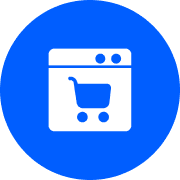
















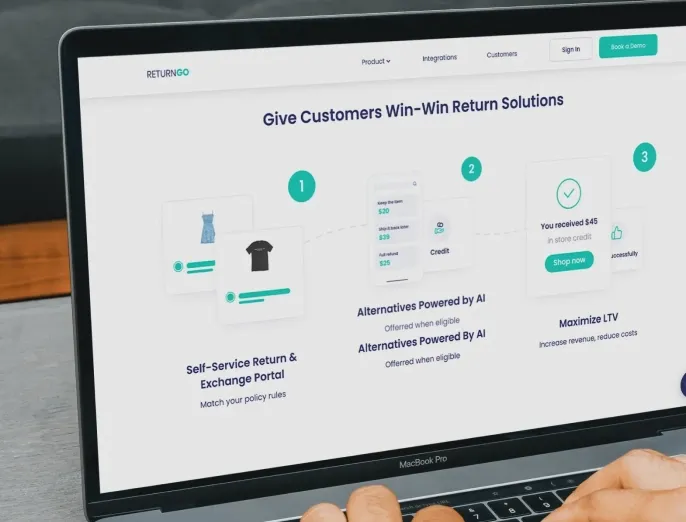

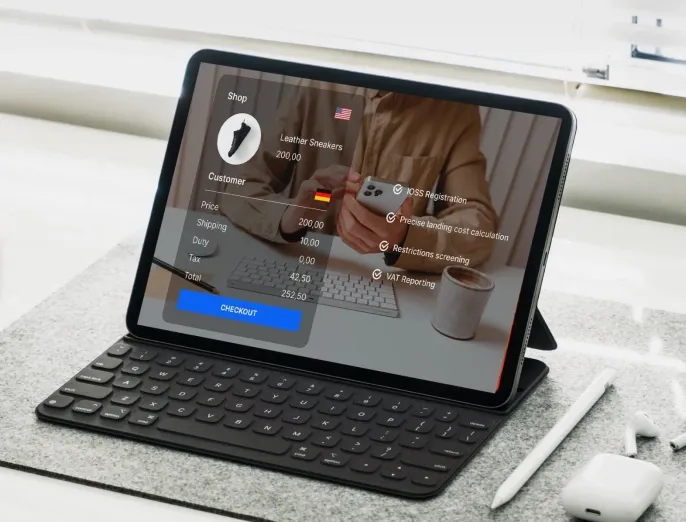


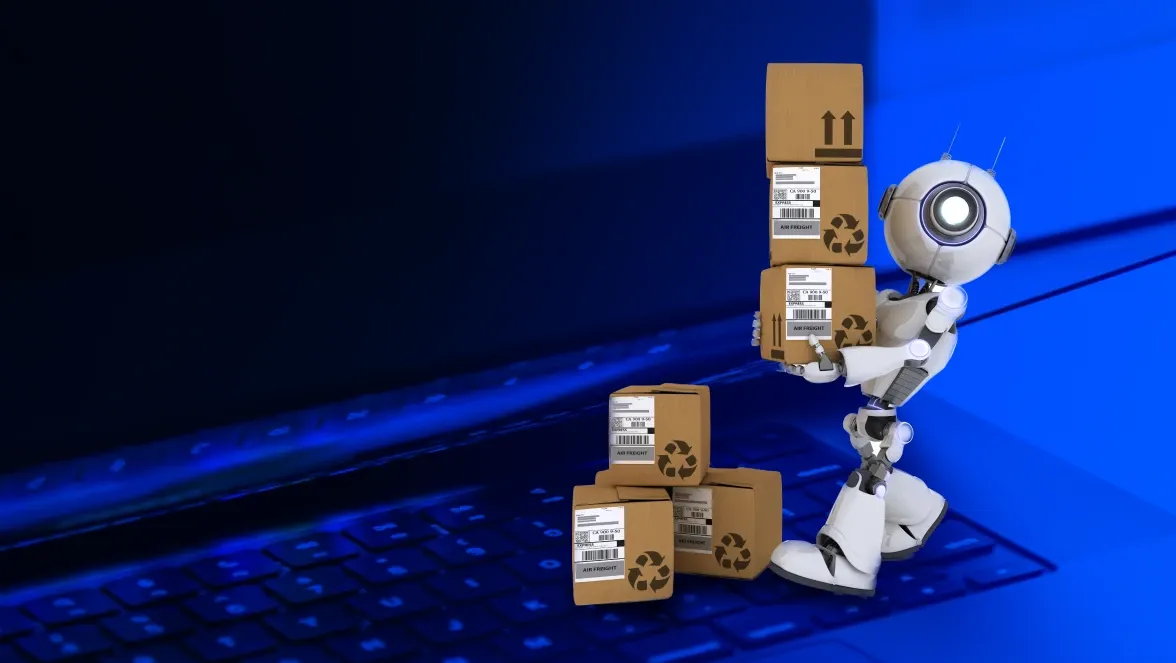





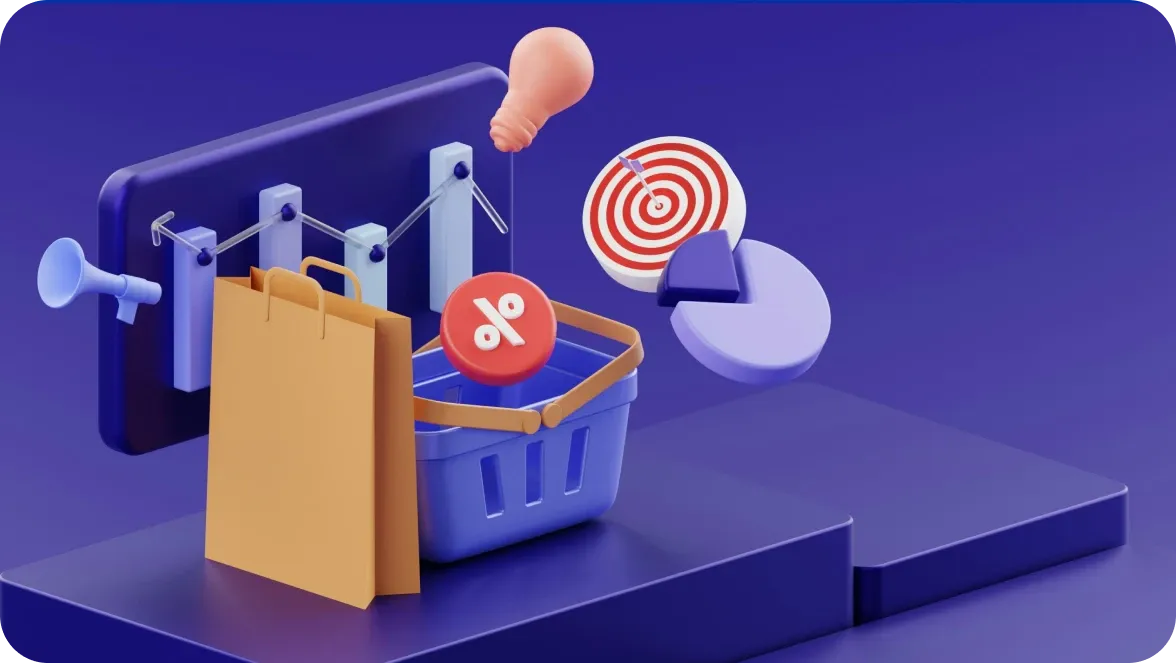
Was this helpful?
0
No comments yet